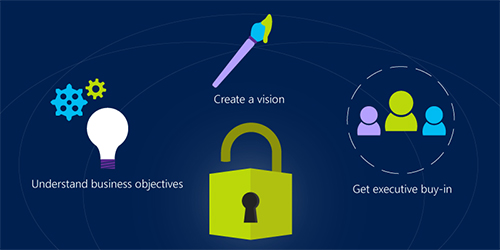
I’ve seen many definitions of digital transformation, but my favorite was from Altimeter Group: “Digital transformation entails the realignment of, or new investment in, technology and business models to effectively engage customers at every touch point in the customer experience lifecycle.”
IDC predicts that by the end of 2017, two-thirds of Global 2000 companies will have digital transformation at the center of their corporate strategy. By 2020, 60 percent of Global 2000 companies will double their productivity by digitally transforming business processes from human-based to software-based delivery.
Customers are ready to embark on their digital transformation—the research clearly shows this is top of mind for them. They’re looking for solutions and for partners to deliver them. From my conversations with several partners who have digital transformation at the heart of their go-to-market, there were three clear takeaways how partners can take advantage of this shift to digital transformation:
1. Understand your customers by drilling deeply into needs, challenges, business objectives, and priorities.
I heard this from all of the partners I talked with: understanding customers—where they are now versus where they want to be—is the first, most critical step.
Intellinet CEO Mark Seeley shared how they get to know their customers: “We believe it is essential to start by evaluating their digital maturity and how poised they are to act on various business process initiatives, including the integration of new technologies. Then we build a strategy roadmap and gap analysis to understand their business objectives and priorities.”
Leap Consulting Managing Director Zaun Bhana told me, “We typically focus our questions across the four common areas of People, Process, Management, and of course, Technology. Uncovering needs is more about identifying what challenges they have currently and what they feel is holding them back. Many execs have quite a good understanding of what is possible now, hence it is how we can help close the gap based on what they are doing currently.”
Cate White, Perficient Marketing Manager, said, “A transformation is a journey, and every journey’s goal is to reach a destination. In this case, the goal is reaching digital maturity, which happens when companies excel at both delivering a quality customer experience and providing digital operational excellence.” Understanding where customers are on that journey, she said, is one of the critical steps to Perficient’s process.
2. Create a vision for where you want to take the customer.
As Perficient’s Cate White told me, as a partner, you have to “make the business case for digital transformation.” Her organization focuses a lot of time and attention on crafting a vision that works for the customer, one that combines tactical projects with the digital transformation strategic vision and has clear definitions of customer experience strategy and goals.
At Intellinet, according to Mark Seeley, “We want to lead customers through their business transformations by taking advantage of innovative digital solutions. We want to be able to help clients evolve their business, so we’re creating new models and showing them how they can leverage digital transformation.”
At Leap Consulting, says Zaun Bhana, “Our model of beginning everything with a planning engagement helps give customers confidence that there is a way forward and what that could look like. The hardest parts are getting to drill into opportunities on where they want to take the company and why. Big picture questions help, like, If a staff member wanted to start up in competition with you, and wanted to disrupt your business, what would they do?”
Providing customers with a clear assessment of the gap between where they are and where they want to be—and providing solutions to bridge that gap—is key to making the argument for digital transformation.
3. Get executive level buy-in to your vision.
Finally, the best-laid plans tend to stagnate if there’s no enthusiasm for them at the top levels of a company. How do successful partners get executives to get behind this transformation?
According to Zaun Bhana, Leap Consulting always tries to include the executive team in building out the transformation plan. But for true success, says Zaun, you also need buy-in from a few rungs down the ladder: “We also roll out a survey to all of their staff, as one of the items we have found is that what the C level cares about can be miles from what gets discussed around the water cooler. So addressing the concerns and needs of both groups helps drive alignment.”
For Cate White and Perficient, executive level buy-in comes with aligning executive vision with business and IT roles, and making sure execs’ business concerns and goals are addressed in the plan. If you’ve truly made the case for digital transformation, demonstrated how you’ll fill technology gaps, and shown how your plan can help them realize their strategic vision, you’ll get the support you need.
Mark Seeley made the point that CMOs and CIOs already know a great deal about digital transformation and have their agendas in place. For example, Intellinet is seeing considerable demand and interest from these execs around mobile-first experience and development strategies, the Internet of Things, and customer-centric marketing. “With the ability to collect and analyze large amounts of customer data, and the proliferation of digital marketing tools, there is now a tremendous opportunity for CIOs to work with CMOs to create customer-centric personalized digital experiences.”
I hope you found this useful and would love to hear your input! Please feel free to reach out anytime via email, Twitter, or LinkedIn.

